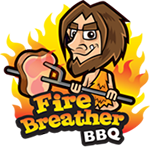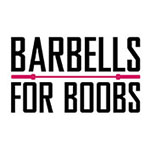Shredded Santa Nutrition Follow Up

The Ropes are up are the Ruination training compound. Get your long socks ready.
Written by Harry Palley
Nation,
Here’s a follow-up to the lecture on Saturday. We had a very tight window to work with, so I breezed over some concepts we can clarify here. Next time we plan one of these discussions, we’ll be setting aside some more time.
Reason behind this write-up is to provide you with the “why.” Often enough, we find ourselves following something simply because… someone told us to. “Eat this, not that. ‘Cause that’s bad for you.” Without an understanding of the reasoning behind, it will not stick for long. Tomorrow, you may be the recipient of some new advice. How will you be able to decide which to go with? Developing this knowledge base in members will provide them the judgment to make healthier decision in the long-term… which is our goal. Nobody wants to shed 5 excess pounds on this challenge only to gain it back a month later.
What we will address today in this post will be the reason why we recommend watching your carbohydrate intake. First off, carbs are not evil. Want to get that out of the way. In the modern age however, it’s incredibly easy to bite into not only the wrong type, but into way more than we need. Remember from the quick lecture yesterday – this is how America became fat.
We’ll come back to this word – hyperinsulinism. This is the root of obesity in the U.S.
Now to explain what that is. To start, we’ll describe what happens in the body when we eat carbohydrate. We used the Pixie Stick example yesterday, so we’ll stick with that. We eat the Pixie stick, and it’s quickly broken down into simple sugars in the body. From there, these simple sugars are pushed out into the blood stream to be used as fuel.
Now with this being Pixie Stick, it’s not just a little bit of sugar – it’s a lot. Your blood sugar, previously stable, shoots through the roof. Sugar high, here we go. The mind may feel a rush, but the body is actually in a state of panic. A high amount of sugar in the blood is legitimately toxic, and can lapse you into a coma if you stay that way (this is unfortunately the case for diabetics). Healthy individuals, to counter this high blood sugar, release a specific hormone to tell the body to remove the sugar from the blood, and store it in the cells. This hormone is called “insulin”.
Now let’s recap that in a single sentence. The body digested a high-carbohydrate food, and in turn, secreted a proportionate level of insulin. All of those calories from the Pixie stick were just shot straight into the cells, as body fat, as opposed to staying in the blood stream to be used as fuel. Repeat this for days/weeks/months, and this is where we get fat.
You may be thinking that we should never eat carbohydrates again – and that is entirely not the case. We want carbs to fuel us… just in moderation. What we want to avoid is the excessive insulin spike, which tells the body to “store” the calories we just consumed.
Fortunately for us, there is a counter-regulatory hormone to insulin, which means it does the opposite. Whereas insulin tells the cells to “let things in” for storage, this hormone tells the cells to “let things out” to be burned as fuel. It’s called “glucagon”, and it’s released when we eat… protein!
We can control insulin by balancing it with glucagon. Finding this hormonal balance will keep the body in, what Dr. Barry Sears calls, the “Zone.” A zone where your body is continually utilizing every calorie you give it as fuel, and not as fat storage.
To keep it simple – aim for more protein (or at least even) gram for gram than carbohydrate in your meals. This will keep the insulin levels at check, and will keep you in a “fat-burning” state. Controlling insulin is key to fat-loss. Going back to the ’92 Food Pyramid, this was not the case. The recommendation was a high-carbohydrate diet dense in grains and other high-glycemic carbohydrates, which led to high levels of insulin release. Spiking insulin over and over for years on end is how America got fat. This is what “hyperinsulinism” means.
Now that leaves one macronutrient of course – fat. Does fat release insulin or protein? The answer is actually neither. Fat is hormonally neutral. So have at it. With our carbohydrate levels dropping given our effort to control insulin release, fat is now our go to for fuel. And it doesn’t take much thought to realize that it’s a great thing when our body is trained to use fat as fuel.
I’m not a big fan of percentages or number recommendations for macronutrient breakdowns, as each individual is different. But for the sake of reference, here are some rough numbers to think about:
Protein – 25-35% of your intake
Carbohydrate – 15-25% of your intake
Fat – 40-60% of your intake
Paleo food choices coupled with these rough percentages work together beautifully. You will be powering your workouts with rocket fuel, and your body will be in a constant state of fat-burning.
Hopefully this write-up provides you with a basic understanding on why our recommended diet is so dramatically different than what the (current) norm is in the United States. This article doesn’t touch the intricacies of Paleo eating, and rather just the principles of carbohydrate/insulin control. Knowledge is power. As always, catch me in the gym at any time or send a question my way at Harry@ruinationcrossfit.com. Some follow on topics will be: optimizing your Paleo food choices, and post-workout nutrition.





